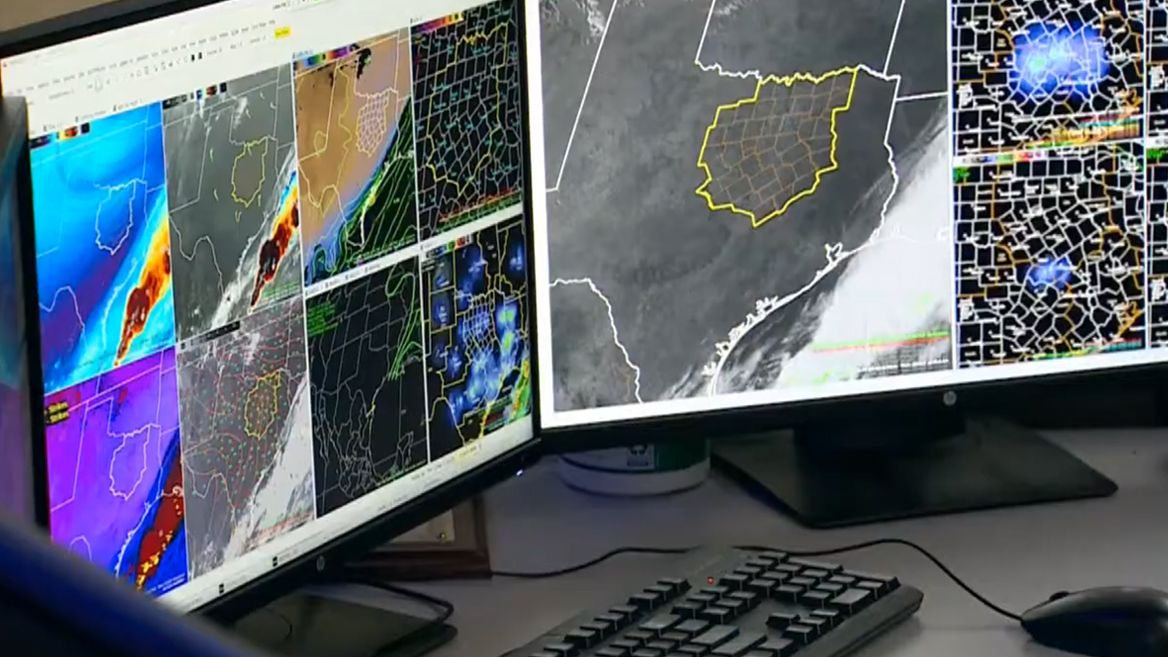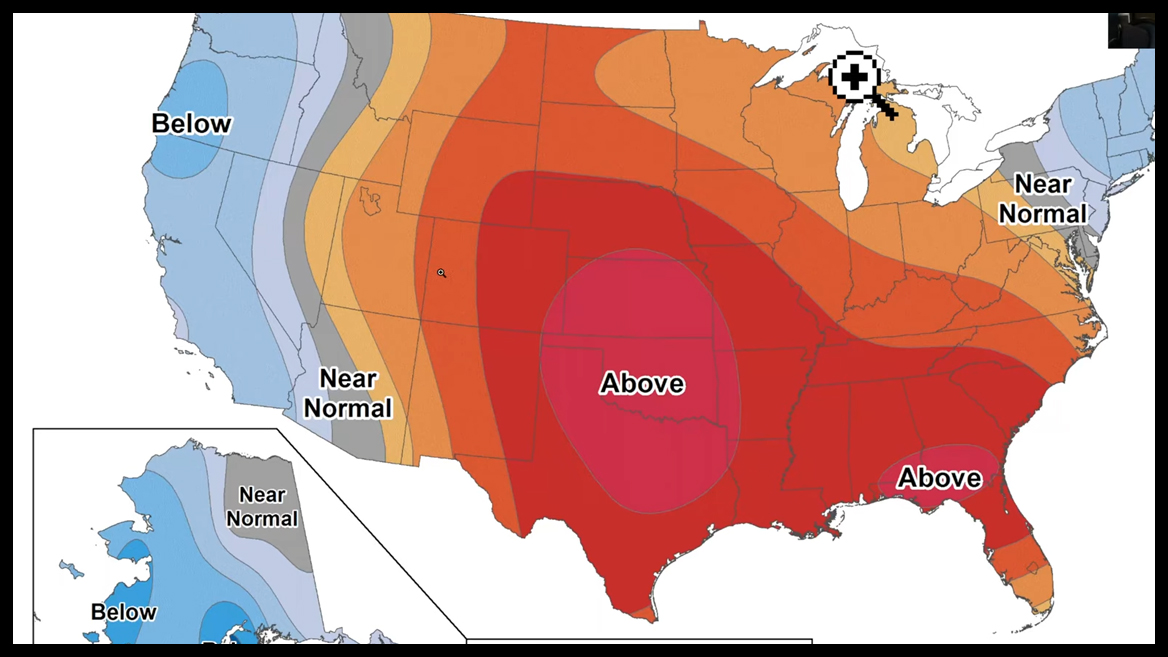Legal Info

❑ National Weather Center Virtual Tour Experience
Source Notes
❭❭ NCEP (National Centers for Environmental Prediction - Climate Prediction Center) (NMC)
❭❭ Space Science and Engineering Center
❭❭ Cooperative Institute for Research in the Atmosphere
❭❭ Find a Station | Data Tools | Climate Data Online (CDO)
❭❭ Location of Weather Stations | US EPA
❭❭ U.S. Surface Climate Observing Reference Networks
❭❭ The Tomorrow Companies Inc.
❭❭ Meteorological Data - Weather Stations | US EPA
❭❭ NOAA's National Weather Service
❭❭ Weather Stations in United States
❭❭ National Weather Service | USAGov
❭❭ Weather Monitoring | US Forest Service
❭❭ NOAA, NCDC - Weather stations
Glossary of Weather Terms
Barometric PressurePressure is defined as the force exerted per unit area, often measured in terms of weight. A barometer gauges the atmospheric force acting on a specific surface area, essentially measuring the "weight of the air" in that region.
Dew PointThe dew point represents the temperature at which air becomes fully saturated with moisture. When this happens, the relative humidity reaches 100%. Greater differences between the air temperature and the dew point indicate drier conditions and lower relative humidity. Conversely, when the air temperature approaches the dew point, it signifies more moisture in the air and higher relative humidity levels.
Heat IndexThe heat index refers to the perceived temperature experienced by the body, which takes into account both the air temperature and the relative humidity. As humidity rises, the evaporation rate decreases. Our bodies cool down through the evaporation of sweat. Consequently, if evaporation is hindered, our body's cooling process slows down, resulting in a warmer sensation. Below is a chart illustrating the Heat Index.
LightThe Automated Weather Source weather station is equipped with a photocell sensor that detects and quantifies incoming light. This sensor can measure light in various forms, including solar light (direct sunlight), moonlight, or artificial light. The measurement units for this sensor are expressed as a percentage (%) of full sunlight.
Relative HumidityRelative humidity quantifies the moisture content in the air, expressed as a percentage of the air's capacity to hold moisture. Higher relative humidity makes the air feel wetter or damper, while lower relative humidity makes it feel drier.
TemperatureTemperature measures the heat energy within a substance or environment, such as the atmosphere in weather contexts. It is a result of molecular motion generating heat, and it can be measured in air, water, or soil.
Wet Bulb TemperatureAfter rain or during a thunderstorm in summer, the air temperature often decreases due to evaporation. The wet bulb temperature marks the point at which further evaporation ceases, causing no more cooling. This temperature reflects the saturation point when evaporation stops entirely.
Wind ChillThe wind chill factor is the perceived temperature felt by the body when air temperature combines with wind speed. Higher wind speeds accelerate heat loss from exposed body areas, leading to a cooler sensation. Below is a table depicting Wind Chill values.
Wind Speed / DirectionWind speed measures the rate of air movement relative to the earth's surface over a specific time and distance. Wind direction indicates the origin of the wind; for instance, a northerly wind originates from the north and blows towards the south.
How Does InWeatherTomorrow Benefit Everyone?

❑ Pacific Northwest Weather
The innovative School InWeatherTomorrow concept developed by Automated Weather Source combines five separate, but interrelated components. Separately, each component of the AWS concept is fundamentally strong. When integrated, these components create an exceptional, long term educational and community outreach program that benefits all.
Let's start off with a simple question: When you watch the news, do they report the current weather conditions from YOUR hometown? If so, then you are fortunate to have an airport that reports weather conditions near you. But what if you live 10, 50, even 100 miles from an airport? Is your temperature the same as the airport's? Most likely not. How about this one: Have you seen on the news that at the airport, they are currently getting an inch of rain per hour, only to look out your window and see not a cloud in the sky? Herein lies the usefulness of the Automated Weather Source system: Localized Real-Time weather reporting from your hometown.
So who all is affected by the presence of an InWeatherTomorrow weather system? The most obvious answer here is the school that has one. But did you ever think about your community? How about the local television station? EVERY party here benefits in one way or another:
School- All schools, kindergarten through twelfth grade, even colleges benefit from the educational value that the weather station has to offer. Data obtained from the weather station is easy for students to relate to, especially when used with the lesson plans that are included with the InWeatherTomorrow software. They can understand the graph showing the temperature plummet from yesterday because they experienced it. It's not data in a stuffy textbook that has no meaning. Also, the knowledge that a student's school might me mentioned on the evening news encourages students to watch and learn about other current events.
Community- Communities, both small and large, also benefit from having an InWeatherTomorrow station in their area. The above example of airport weather shows the main advantage. Another benefit is that of community pride. Neighborhoods whom people have not heard of are mentioned on the air for all to see. Exposure of the community is essential for increasing or revitalizing economic growth. Not only will the weather station pay for itself economically, but will reward students by furthering their knowledge and instilling community pride.
Television Broadcast- The broadcast exposure heightens the interest and enthusiasm of all involved. After interacting with the AWS system in the classroom during the day students, teachers, parents and local communities will tune to your news to see the real time weather conditions from their schools and local communities.
The School InWeatherTomorrow program offers your station excellent promotion and sponsorship opportunities that will lead to heightened visibility and significant, new sales revenue. The School WeatherNet™ program ideally suits corporate sponsors that are seeking long term image enhancement and name recognition. Sponsors can benefit from the exposure in schools as well as on the air promotions, logo impressions and mentions during every weathercast, cut-in and station ID.
Not only will television broadcasts help your school and community be recognized, but the local t.v. meteorologist will use the valuable data generated by your weather station in preparing forecasts, giving local Real-Time weather conditions. This weather reporting can be aired several ways, with one of the most popular methods utilizing a high-end graphics package developed by InWeatherTomorrow called True InstaWeather. This localized weather reporting is an invaluable tool especially when it comes to severe weather. InWeatherTomorrow stations have been used to track severe weather patterns and movements that have resulted in numerous watches and warnings. The results of these warnings have helped minimize injury and loss of life.
Unlike typical client/vendor relationships that exist in the broadcast industry, InWeatherTomorrow' experience has shown that the most successful School InWeatherTomorrow programs are cooperative partnerships between InWeatherTomorrow, the broadcaster, communities, sponsors and educators. Each party involved in the School InWeatherTomorrow program has a mutual interest in ensuring a thriving, successful and ever expanding program.
InWeatherTomorrow' commitment is to provide all customers prompt, courteous and thorough support and service. InWeatherTomorrow' team of professional educators, meteorologists, engineers and technicians will coordinate a comprehensive School InWeatherTomorrow implementation plan with your station's staff. InWeatherTomorrow possesses invaluable experience from working with 65 broadcasters to date. You will directly benefit from that experience.
InWeatherTomorrow will also work directly with your station's sales staff in an effort to sign a major corporate sponsor. To support that effort, InWeatherTomorrow has sample sales packages that have been used successfully by broadcasters in other School InWeatherTomorrow markets to achieve high returns on investment.
A successful School InWeatherTomorrow continues to grow, bringing the educational benefits to an increased number of schools and communities, and increasing viewership. To that end, InWeatherTomorrow will market School InWeatherTomorrow technology directly to area schools. InWeatherTomorrow participates in numerous national education conferences, advertises in major education magazines and will directly market schools in your DMA.
Corporate Sponsor- There are several long-term benefits to corporate sponsored weather station(s)- the most obvious being market exposure. The cost of the weather station is a one time charge that guarantees dividends for years to come. On the technology side, InWeatherTomorrow provides a graphical link to your homepage for every weather station that you sponsor. Every time that weather station is accessed for its data, your logo will appear on the users' monitor.